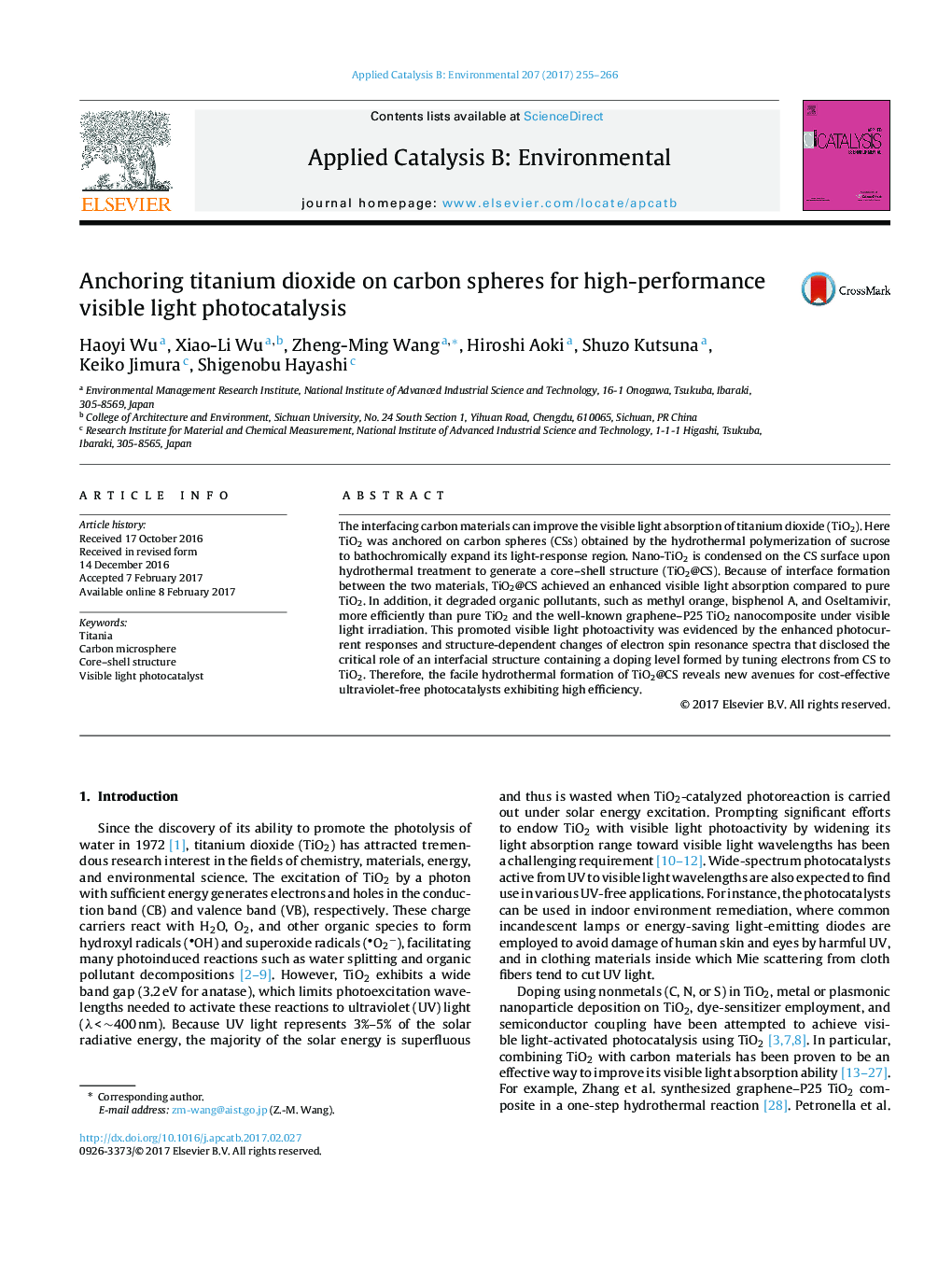| Article ID | Journal | Published Year | Pages | File Type |
|---|---|---|---|---|
| 6454074 | Applied Catalysis B: Environmental | 2017 | 12 Pages |
â¢TiO2@CS structure was successfully fabricated with a facile hydrothermal method.â¢TiO2@CS showed a superior visible light photoactivity.â¢Detailed interfacial charge transfer mechanism was elucidated.
The interfacing carbon materials can improve the visible light absorption of titanium dioxide (TiO2). Here TiO2 was anchored on carbon spheres (CSs) obtained by the hydrothermal polymerization of sucrose to bathochromically expand its light-response region. Nano-TiO2 is condensed on the CS surface upon hydrothermal treatment to generate a core-shell structure (TiO2@CS). Because of interface formation between the two materials, TiO2@CS achieved an enhanced visible light absorption compared to pure TiO2. In addition, it degraded organic pollutants, such as methyl orange, bisphenol A, and Oseltamivir, more efficiently than pure TiO2 and the well-known graphene-P25 TiO2 nanocomposite under visible light irradiation. This promoted visible light photoactivity was evidenced by the enhanced photocurrent responses and structure-dependent changes of electron spin resonance spectra that disclosed the critical role of an interfacial structure containing a doping level formed by tuning electrons from CS to TiO2. Therefore, the facile hydrothermal formation of TiO2@CS reveals new avenues for cost-effective ultraviolet-free photocatalysts exhibiting high efficiency.
Graphical abstractDownload high-res image (128KB)Download full-size image
